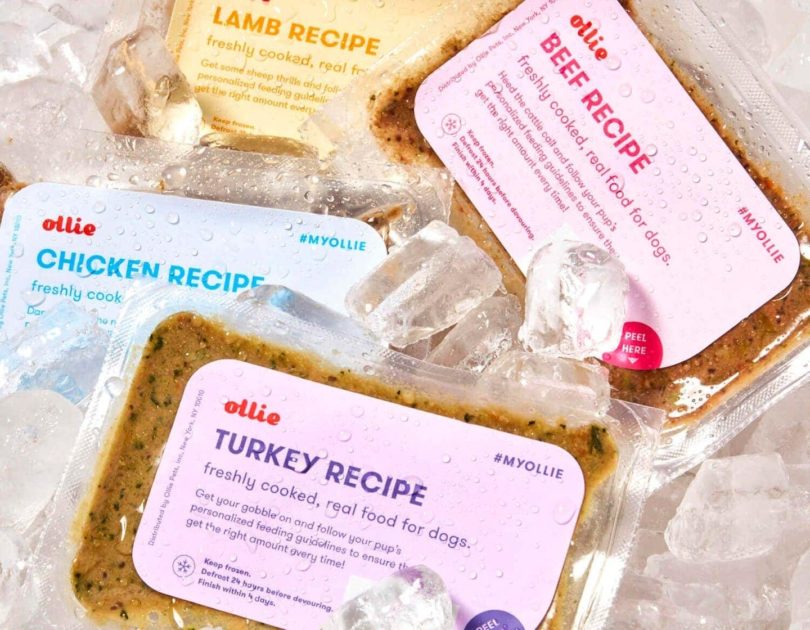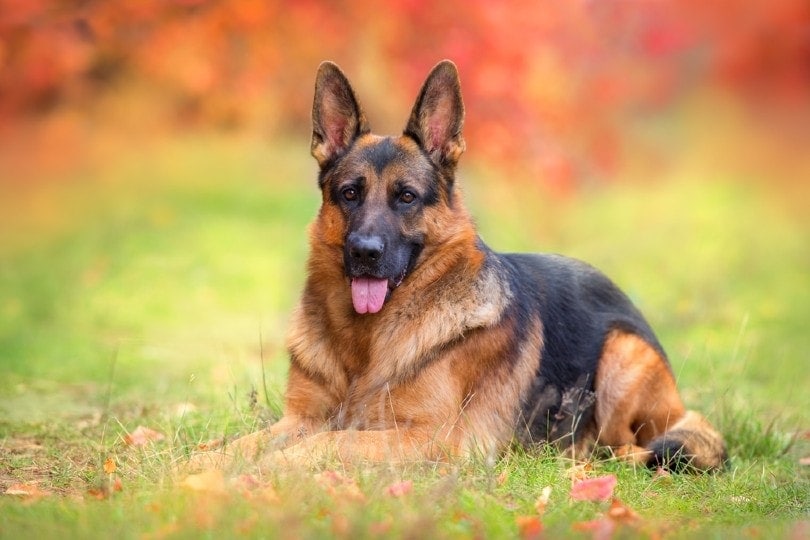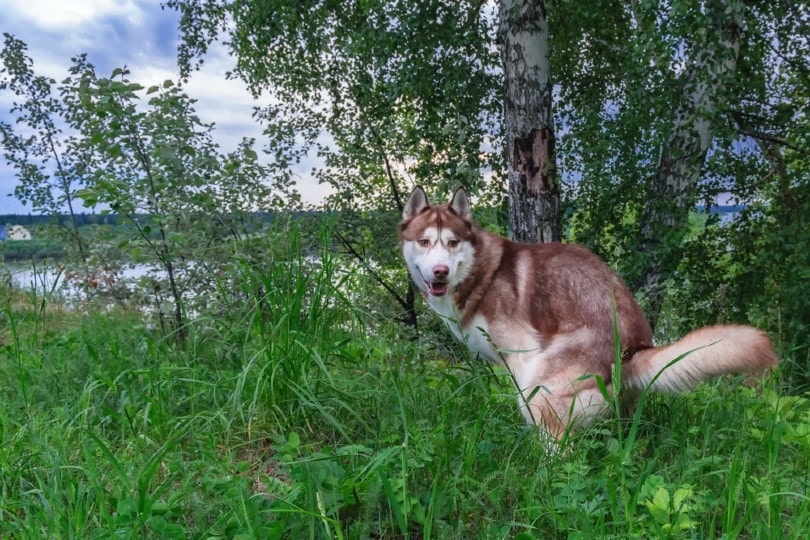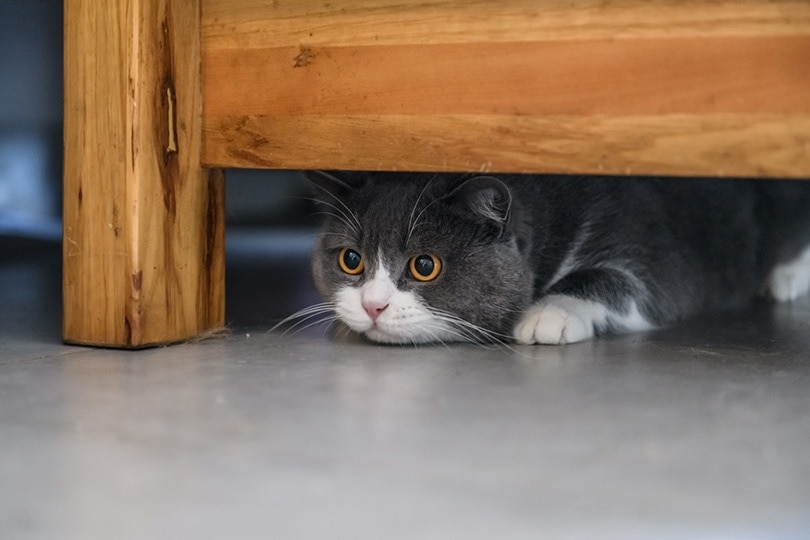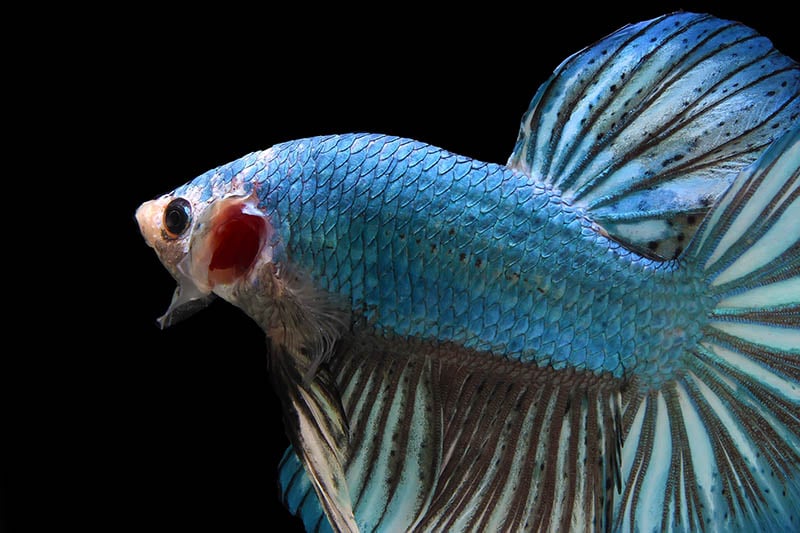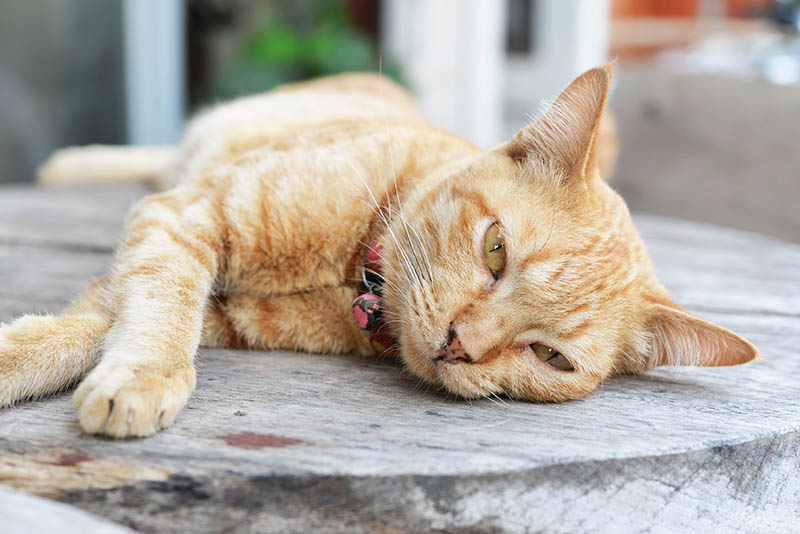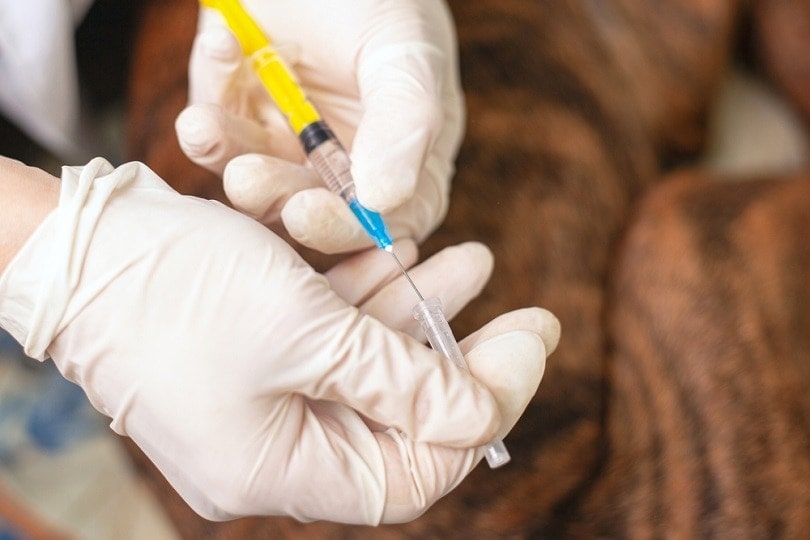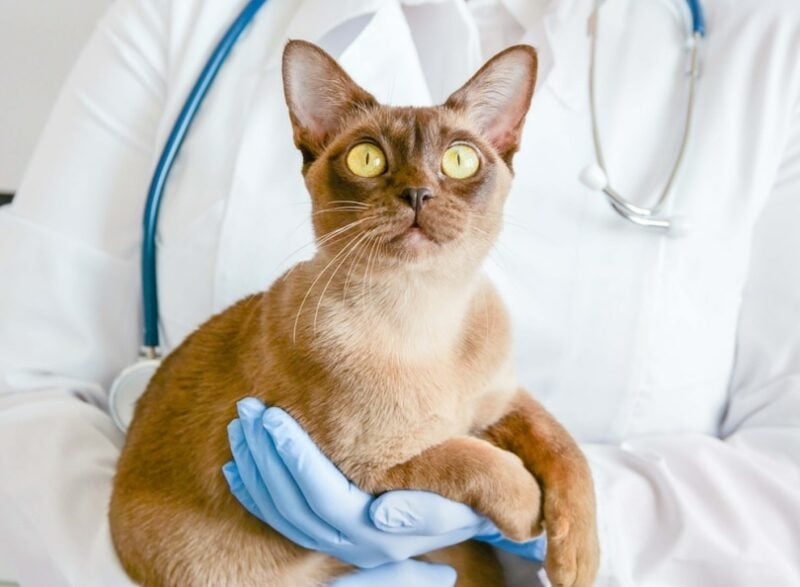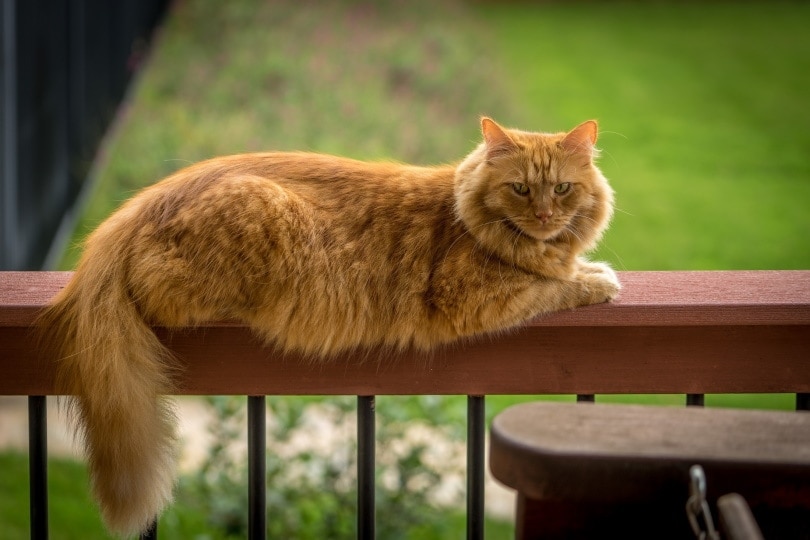21 Shar Pei Colors (With Pictures)

Updated on
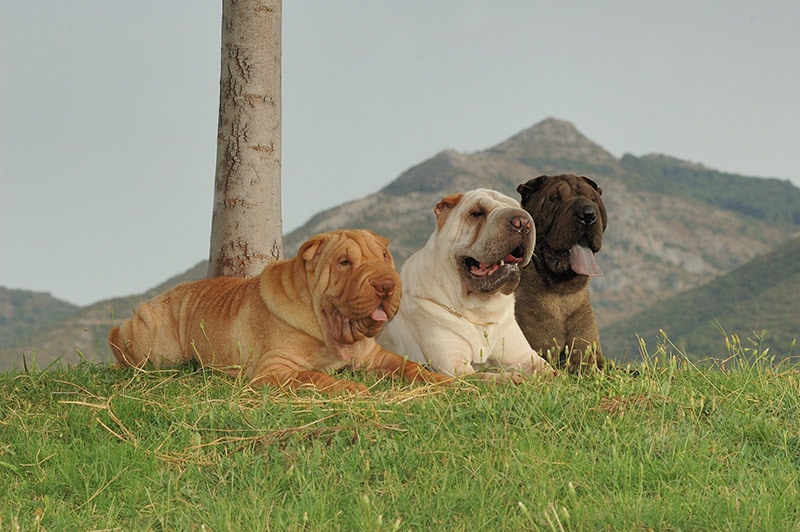
Click to Skip Ahead
If you’re planning on adopting a Chinese Shar-Pei, you’re probably a bit overwhelmed by the sheer number of coat colors. The list includes brown, fawn, and black, along with some exotic options like Isabella dilute, five-point red dilute, and cream sable. That said, some of these colors aren’t officially recognized by the American Kennel Club.
So, how do you know which colors are accepted by the AKC? What sets them apart from the rest? For a first-time pet owner, this can be a lot to take in! To help you out, we put together a list of all the available Shar-Pei coats and broke them down into standard (solid, dilute, and sable) and non-recognized colors. Take your pick!
The 7 Solid Colors
The AKC recognizes seven standard solid colors, including black, brown, and red. The term “standard” means your doggo will be accepted at various canine shows. In contrast, pups with non-standard colors won’t be allowed to participate in certain events or competitions because they don’t fit the breed’s description. Here’s a closer look at the AKC-approved solid Shar-Pei colors!
1. Black

Shar-Pei pups look amazing in black coats: this color gives them noble, dignified, and sharp vibes. It also makes the doggo appear bigger and stronger, putting fear into the hearts of intruders. This is a very popular color for the Chinese breed; you won’t have a hard time finding black pups at a local shelter or rescue center. The short, rough fur, wrinkly skin, and sunken eyes of the Shar-Pei go well with black.
Oh, and the pet won’t have any white patches on the coat (which is a common thing for black fur).
2. Cream
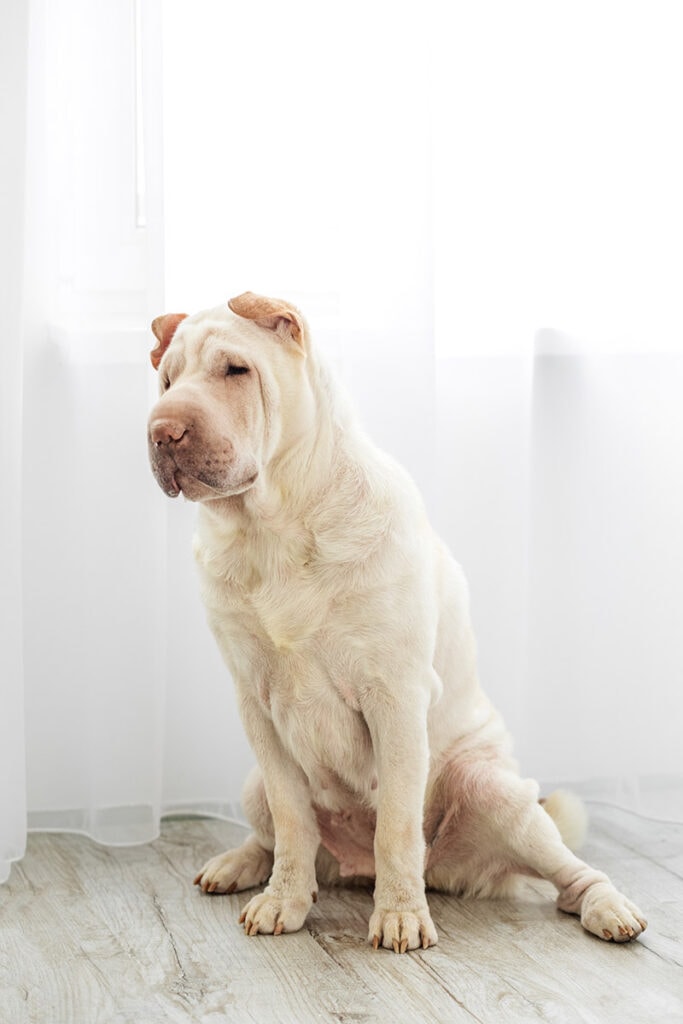
Often mistaken for white, cream is a bit warmer. So, if you want your Shar-Pei pet to be welcoming and inviting to strangers, cream might be a perfect pick. It gives the doggo a friendly, cute touch, especially if it’s still a puppy. And if you notice that the dog’s ears and nose are a bit darker and have a different hue, that’s completely normal.
3. Brown
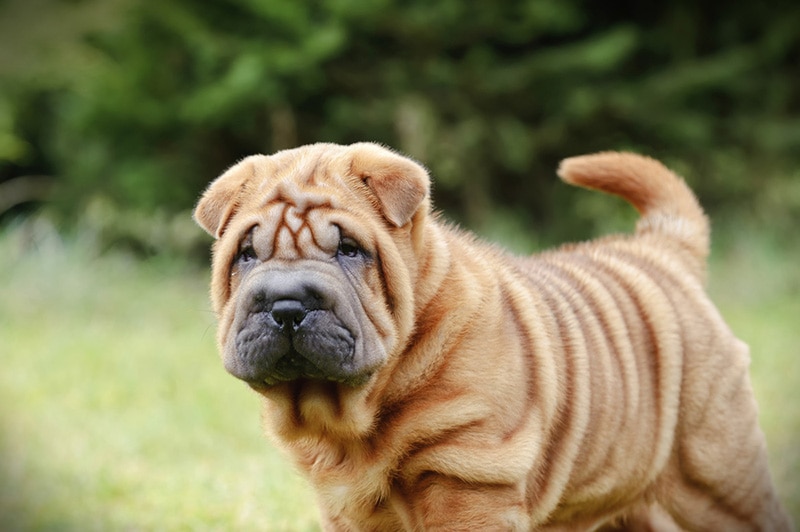
Here, we have another common solid color for a Shar-Pei. It sits right between red/fawn and cream/white, making the doggo echo a Labrador Retriever, German Shepherd, or fellow Chow-Chow. Brown is a safe color, one that doesn’t make the pup stand out in the crowd.
4. Red

To the naked eye, it might seem that a pooch with a red coat has brown fur instead. However, if you take a closer look, you’ll see that red is much brighter, giving the pet a fiery touch. Now, this is a rather rare color for the average dog, but not for the Shar-Pei. Folks in the market for something a bit exotic will find this one to be right up their alley.
5. Red Fawn
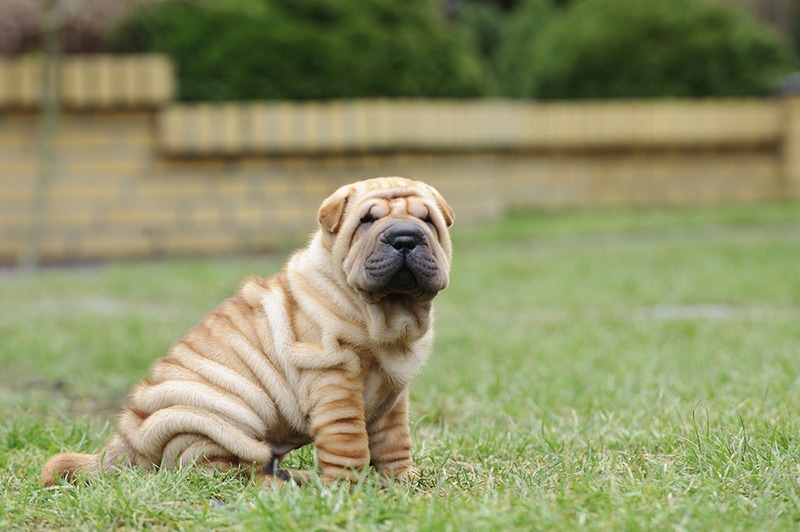
Not sure red is your cup of tea? Then how about mixing it with fawn? This mighty color combo is a match made in Heaven for adult Shar-Pei dogs, as it accentuates their fearless, loyal, and affectionate nature. It’s lighter compared to standard red, but you’ll still find darker spots near the extremities (the elbows and wrists).
6. Fawn
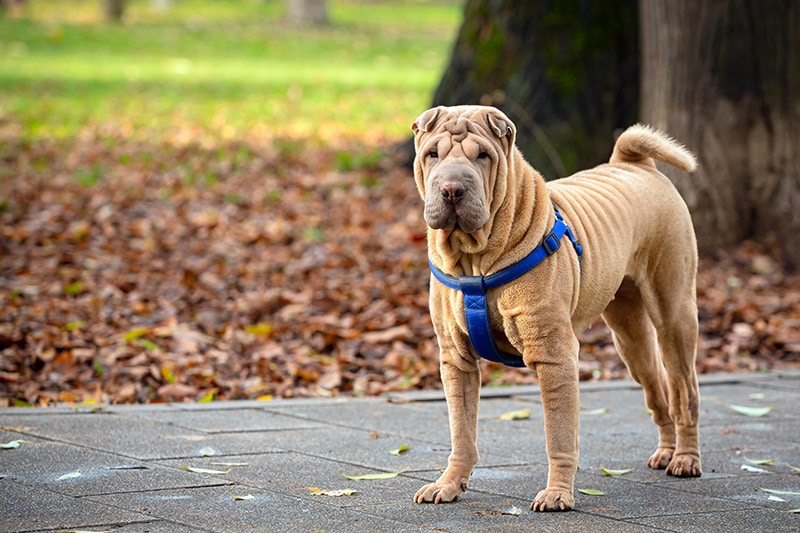
No need to commit to red fawn; instead, try opting for an all-fawn coat. Ranging from light yellow to beige and all the way to brown, fawn is considered a neutral color. It’s often used in furniture, furnishings, and clothes for its calming, relaxing nature. If that sounds like something you’d like the Shar-Pei pet to have, go for it!
7. Blue

Don’t worry—you won’t be bringing a sky-blue dog home. Instead, “blue” is used for pups with a silvery/icy coat. When the fur is lighter than black yet not all-out gray, that’s when you know it’s blue. It can be a bit on the lighter or the darker side, but, in most cases, these Shar-Pei pets have blue noses and a set of blue eyes.
The 7 Dilute Colors
The term “dilute” is used to describe dogs with a recessive gene. It affects the pup’s coat (makes it lighter, i.e. changes black to gray/blue), eyelids, and lips. Also, check the dog’s nose: if it’s blue, that means genetically, the dog has a blue pigment. The list of dilute Shar-Pei coats includes the likes of apricot, chocolate, and lilac.
1. Apricot Dilute
If the coat is not brown, fawn, or red, best believe it’s going to be apricot dilute. It’s much lighter than red or brown yet has a much darker tone compared to white or cream. It’s a bright, fun color that makes the doggo look younger than it actually is. Shar-Pei and Poodles are among the most popular dog breeds with an apricot dilute coat.
2. Blue Dilute
Just like the regular blue, the dilute version is similar to gray, yet the tone doesn’t get darker around the pup’s face. These dogs are sometimes called “born blues”, simply because their coat is blue from the very first day. In contrast, most pups come into this world with a much darker fur that slowly turns gray once they grow into adults.
3. Lilac Dilute
Sometimes, when the genes in a dog’s body are “not sure” whether they want the fur to be blue or chocolate, they go with lilac dilute. Essentially, it’s light brown and it does, indeed, look a bit like faded lilac. If you can’t quite put your finger on the fur color, check out the Shar-Pei’s nose. It should have a pink tone (just like the paws).
4. Cream Dilute
For some dogs, cream is not light enough, but cream dilute hits the spot. It’s not the brightest color out there, but it does resemble light pink, which is a very tender, warm, and soothing tone. And, again, pay attention to the dog’s nose: you’ll find it to have a cute pinkish hue.
5. Chocolate Dilute
https://www.instagram.com/p/CcLPModq_Xb/
Shar-Pei pups can be very sweet in any color, but the ones with chocolate dilute coats take the cake! So, what does this color look like? And is it a good match for a Shar-Pei? Yes, it’s a beautiful tone, similar to soft brown mixed with a little bit of fawn. Also, since there won’t be any dark or light patches on the fur, the Shar-Pei will look like the canine version of a teddy bear.
6. Five-Point Red Dilute
Often called red dilute, the five-point red dilute is a highly sought-after color in China because red is a sign of prosperity there. The dog will have amber eyes, dark hues around the nose, and a lavender tongue. Five-point red Shar-Pei pups are quite rare compared to brown, fawn, and regular red, which is why they tend to be expensive.
7. Isabella Dilute
Trying to get a Shar-Pei dog with a dilute fawn coat, yet can’t seem to find it? Well, that’s probably because it’s called Isabella dilute. Just like cream dilute, it’s a light color, one that comes with barely noticeable pigmentation (usually pink) on the face and the paws.
The 4 Sable Colors
Today, sable-color dogs are incredibly popular, and for good reason. When the dog carries a dominant sable gene, it makes the coat lighter at the base and darker at the tips. The range of colors is quite impressive, too. German Shepherds are famously known for having beautiful sable coats, but the Shar-Pei look just as stunning. Here are the four AKC-recognized variants.
1. Black Sable
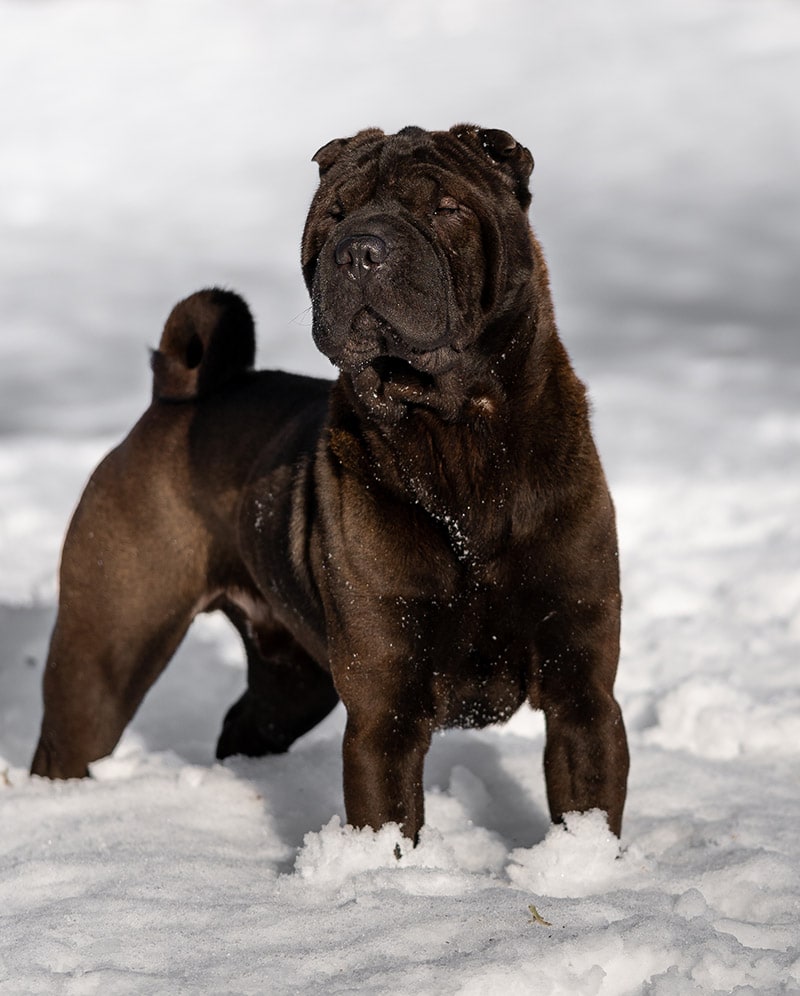
Clean, elegant, and lush, black sable coats are a mix of solid black and gray/umber brown. Black sable is categorized as a transitional color, and you’ll find that in this case, your Shar-Pei’s hair is much lighter compared to that of a “true” black fur. Also, there may be some light patches all over the coat, making the Shar-Pei resemble a German Shepherd dog.
2. Cream Sable
What do you call a pup’s coat that mixes gray, silver, and cream? Well, the scientific term for that is “cream sable”. It’s a pale, even tone that looks like orange but isn’t nearly as bright. And, just like black sable, cream sable fur is light at the root but becomes darker as it grows, with the tip being the darkest part of the coat. For some pet parents, this color is an acquired taste; for others, it’s perfect from the get-go.
3. Fawn Sable

Shar-Pei fans searching for a tri-color pup should pay extra attention to fawn sable. Technically, it’s one color, but in reality, you’ll get a stunning combination of fawn/red, tan, and black around the face. The paws will also be painted black, while the rest of the body will be light brown. And yes, this is a standard color recognized by the American Kennel Club.
4. Red Sable

Do you like fawn sable but would like it to be a bit darker? Well, we have the perfect option for you: red sable! This is a marvelous color that brings the best out of a Shar-Pei (the stoic, dominant nature, intelligent mind, and gentle, loving heart). The hair is usually darker around the dog’s eyes and mouth, but the rest of the coat has a universal tone.
The 3 Non-Standard Colors
Alright, that’s it for the colors officially recognized by the American Kennel Club. Now it’s time to take a quick peek at the non-standard colors, three in total: white, blue sable, and brown sable. These colors look beautiful on the Chinese Shar-Pei dog, yet aren’t categorized as standard in the US:
1. White
If you’re not planning on participating in any dog shows, a white coat can very well become your favorite. It’s an angelic color that suits both baby and adult Shar-Peis. It’s not a very popular/widespread color, but it’s worth paying a bit extra for that majestic snow-white coat. We have to warn you, though, that solid white dogs are prone to deafness.
2. Blue Sable
Rare, beautiful, and a perfect match for Shar-Pei, these coats aren’t recognized by the AKC. On the bright side, the UK and Canadian clubs do accept blue sable. This is a rich, luxurious color with equal amounts of charcoal, gray, silver, and blue. The tips of the fur will be blackish, and you may also find traces of fawn on the coat.
3. Brown Sable
This is a fancy name for the good old light brown, and, just like blue sable, it features black/darker tips. In the States, it’s a relatively rare color, and not only because it’s not accepted by the AKC. So, if you’d like to adopt a brown sable Shar-Pei, it will take some patience. Such a pup will also cost extra.
What Colors Do Other Kennel Clubs Recognize?
The AKC is THE dog club in the States, but what about the British, Canadian, and international kennel clubs—what Shar-Pei coat colors do they accept? Here’s a quick breakdown:
- The UKC (United Kennel Club, founded in 1898) officially recognizes all solid and sable Chinese Shar-Pei coat colors, be they black, blue, red, or fawn. More than that, a solid base color is allowed to be a bit darker in certain areas. Spotted, brindle, mixed, and 50%+ white coats are not accepted by the UKC, though.
- The CKC (Canadian Kennel Club, established in 1888) is very similar to the UKC in its approach to Shar-Pei color recognition and classification. They accept all solid and sable coats, including white, blue sable, and brown sable. And, again, if a solid color has shadings, it will still be categorized as a standard color.
- Lastly, the FCI (International Canine Federation, founded in Belgium in 1911) is a bit more demanding and only accepts solid coats. And, just like the AKC, it doesn’t classify white as a standard color. More than that, if your dog has sable or diluted fur, the FCI won’t accept it, regardless of size, sex, or age.
Why Do Dogs Have Different-Color Coats?
Some pups are born with black fur, while others have blue, brown, or red. Why is that, exactly? The color of any canine’s coat is determined by two dominant pigments/forms of melanin: black (eumelanin) and red (pheomelanin). All the other colors, shades, and tones are derivatives. However, these pigments are not exactly in charge. Instead, they are supervised by a set of genes.
They are in full control of color production and determine exactly how much black or red pigment is produced by giving specific instructions to the cells in a dog’s body. Thanks to these genes/loci (eight in total), dogs often have double- or even tri-colored fur. Beagles, Bernese Mountain Dogs, and Pit Bulls are great examples of that.
Conclusion
The Shar-Pei dog is recognized for its loose, wrinkled skin, fearless nature, and exceptional watchdog/guardian talents. With that, it’s quite a fancy breed and rocks 21 different coat colors, including blue, lilac, and apricot. More than that, Shar-Pei pups can have solid, dilute, and sable colors. However, the AKC only accepts 18 colors as standard.
The UKC, CKC, and FCI have their own criteria. So, if you want to join a dog show or enter a competition, make sure your four-legged friend will be allowed. Or, if you’re just planning on adopting a Shar-Pei, just pick a coat color that the AKC or any other club accepts. But, in all fairness, all Shar-Pei colors look stunning!
Featured Image Credit: Marcelino Pozo Ruiz, Shutterstock





